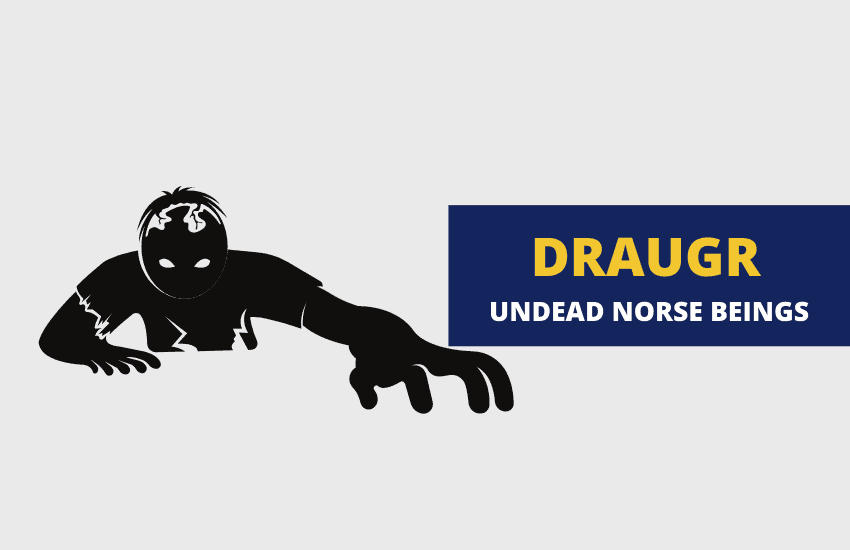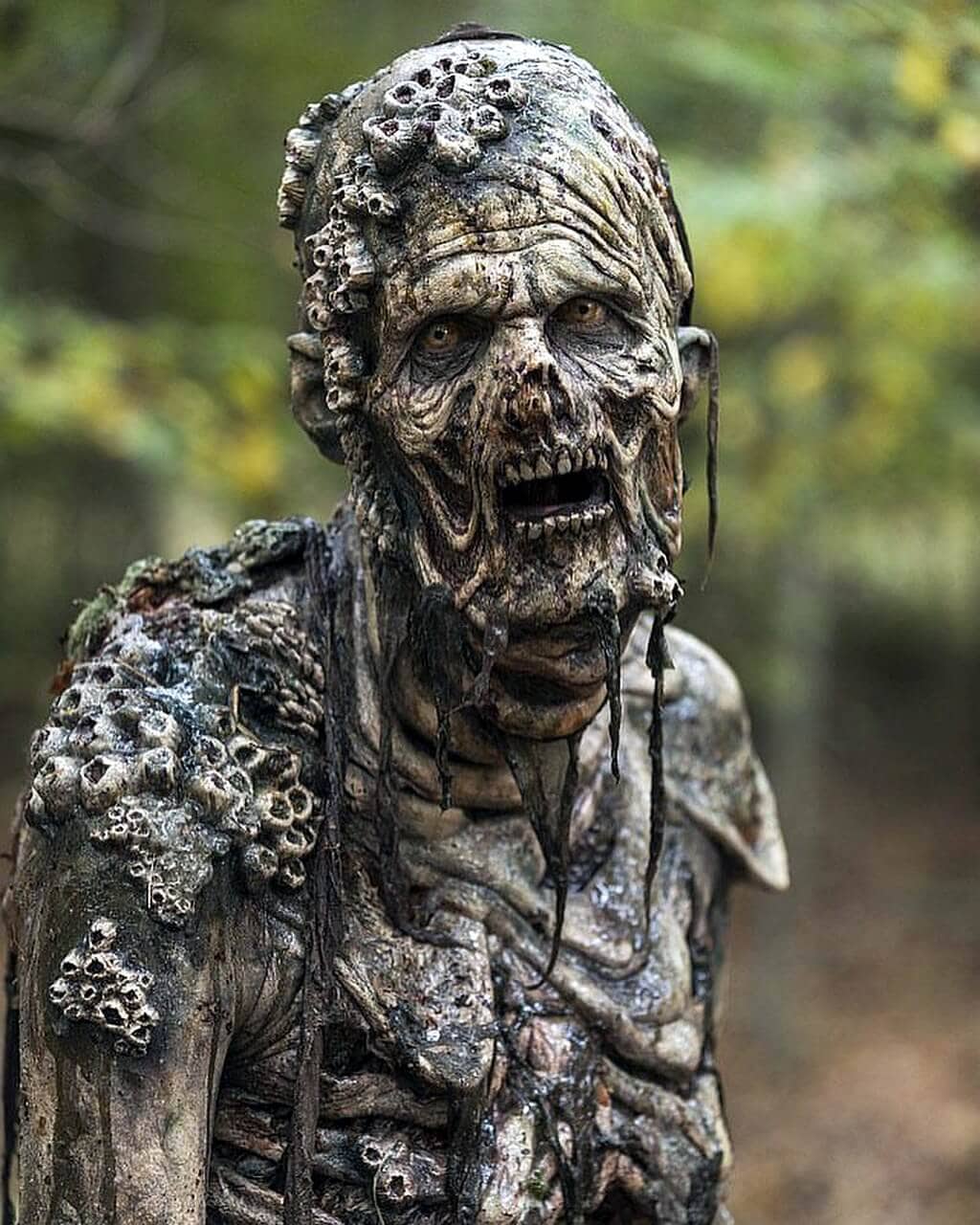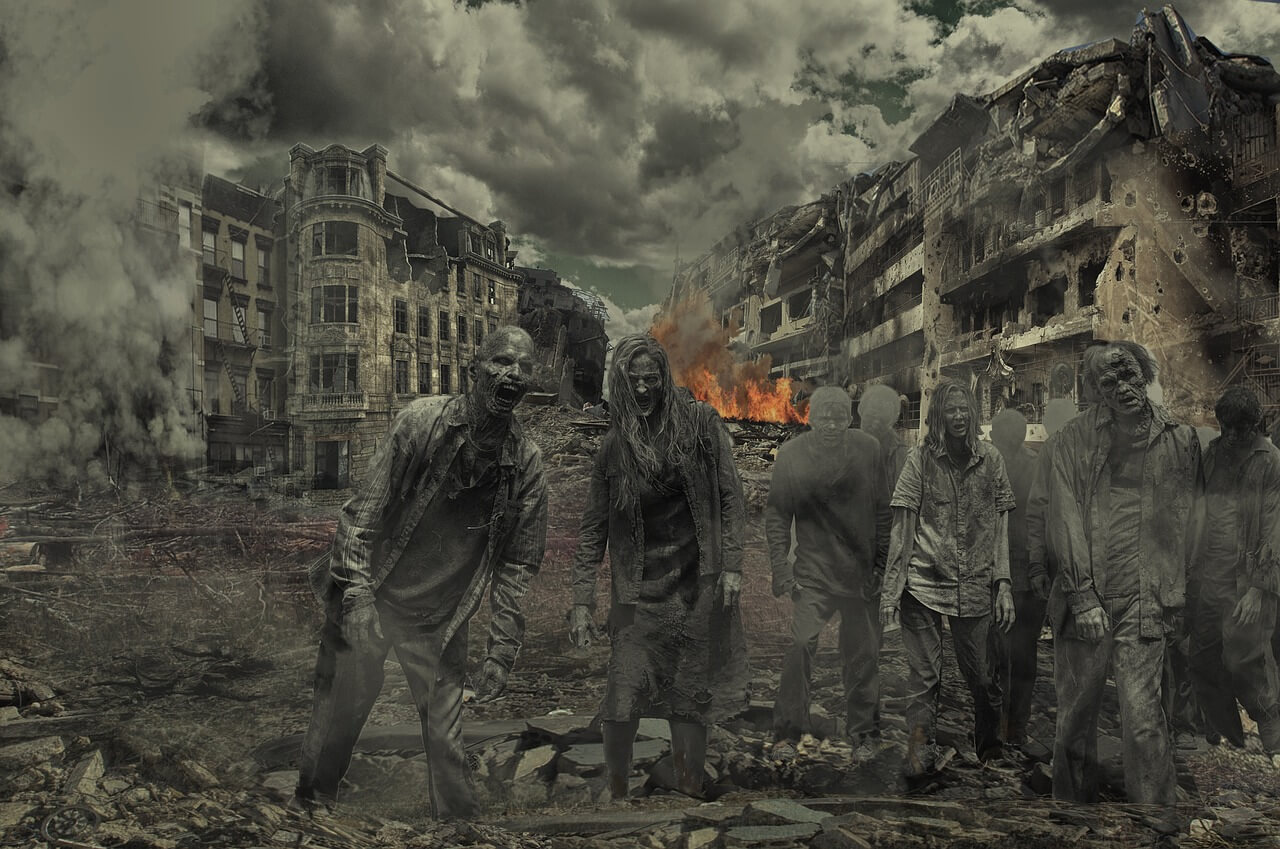
Table of Contents
Draugr is a menacing sounding name for a menacing creature. Also called draug or draugar (plural), a draugr is an undead monstrosity in Norse mythology, not dissimilar to our modern-day concept of zombies. Draugar creatures can be seen in various Scandinavian folk tales and sagas but the term has also been more broadly used for zombies across other European literature.
Who are the Draugar?

Also called haugbúi (barrow-dweller) or an aptrganga (again-walker), the draugar live in the graves or burial mounts they were buried in after their natural deaths. While sometimes the result of magic or curse, most draugar are formed “naturally” – they are just the remnants of people who were evil, greedy, or sometimes just marginal and unpopular.
The draugar often guard various treasures – either the ones they themselves were buried with, or other treasures that were later buried there. However, they are not necessarily tied to their burial place and draugar were often said to patrol larger areas around their burial places or even wander aimlessly around the world.
Bringers of Disease and Plagues
Much like many modern-day depictions of zombies, the Norse draugar were able to bite and infect others and turn them into undead draugar as well. They also brought many diseases to both people and livestock, however, and many disease outbreaks were believed to be caused by a draugr’s bite.
Some people draw an association between the draugar and the vampire myth as the latter were also able to spread vampirism through a single bite. However, such a parallel seems unnecessary given that modern zombie myths also fit this description.
Supernatural Strength
While most modern zombie myths portray these horrific creatures as just animated corpses, the Norse draugr was much more strong physically than the living person that preceded it. This made the draugar very formidable opponents, especially when many of them would attack a village or town at once.
And such attacks did happen, according to the old Scandinavian sagas and folk tales. Entire herds of cattle would sometimes disappear overnight by an attack of multiple draugar while other times villages would have to be evacuated to avoid the unstoppable horde.
As strong as they were, however, draugar were not unstoppable. Norse heroes would still be able to stop a draugr albeit with quite a lot of difficulty.
Hard to Kill
A draugr was an incredibly difficult creature to kill. Immune to most types of weapons, unable to feel pain, and unaffected by most types of physical trauma, a draugr had to either be decapitated or burnt to ash and then tossed into the sea. In some myths, it was possible to drag the kicking and screaming monster back into its grave and seal it there but that was rarely accomplished.
In the Saga of Hromund Gripsson, it’s said that wounds from pure iron blades were able to harm a draugr but even they were insufficient of fully stopping the creature.
This, together with the draugar’s incredible strength, made them considerably more imposing and threatening than most zombies in modern-day pop-culture.
Other Physical Characteristics
Draugar were typically described as hideously looking, which is hardly a surprise. In some myths, they had a necrotic black color while in others they were described as pale or death-blue in color. Sometimes they were said to be thin and crooked while other times they were described as bloated. They always reeked of decay, however.
In some myths, such as the Saga of Hromund Gripsson draugar were also much larger than an actual human. There, the berserker Þráinn (Thrain) turned into a troll-like draugr. He was black and huge, he could blow fire, and was roaring loudly. He also had huge predator-like scratching claws.
Masters of Magic
In addition to being huge and monstrous zombies, many draugar were said to wield various types of magic. Depending on the story, the draugar can possess supernatural skills such as shapeshifting, cursing people as shown in the Grettis saga, invading their dreams Freddy Krueger-style, and more.
They were even able to blot out the sun and create solar eclipses. In the Laxdæla saga, a draugr was said to be able to sink into the ground to escape the chieftain Óláfr Hǫskuldsson (Olaf the Peacock). A draugr can even kill people indirectly by forcing bad luck upon them.
Why Do Draugar Exist And How Could They Be Prevented?
Draugar rarely came back to life because of a curse or something similar. More often than not, they were just the remnants of people who were evil or greedy in their life. In that sense, they are similar to the oni demons in Japanese Buddhism.
That being said, it was possible to prevent the formation of a draugr or, at the very least, to prevent the monster from escaping its grave. When people were afraid that a recently deceased person might come back as a draugr, they tried employing one or more of the following methods:
- They placed a pair of open iron scissors on the deceased’s chest.
- They hid straws and twigs in the clothes of the deceased.
- The big toes or the soles of the deceased’s feet were tied together so that they couldn’t walk well if they ever came back as a draugr.
- The coffin of the deceased was to be lifted and lowered three times and in three different directions as it was carried toward its grave, supposedly to confuse the draugr’s sense of direction. This way there was a chance that it wouldn’t come to haunt its former village if it ever came back to life.
- The graves or tombs of the deceased were also to be properly bricked so that even if they came back as strong draugar, they couldn’t get out of their graves.
- Placing the deceased in a properly laid down posture was also important. Dead people placed in a sitting position (such as Þórólfr bægifótr (Thorolf Lame-foot or Twist-Foot) in the Eyrbyggja saga) or even standing upright (such as Víga-Hrappr in the Laxdæla saga or people buried in the Scottish Gaelic upright cairn burial monuments) were believed to be very likely to come back as draugar.
- The main means of prevention, however, was the attempt of teaching people to be better in life. Essentially, the draugr myth existed as a type of “hell myth” – it was used to scare people into being better, lest they turn into zombies.
Were the Draugar the First Zombies In Europe?

The draugr myth was one of the oldest myths to resemble the modern-day zombie. However, there are even earlier signs about such undead creatures in ancient Greece where people would pin down the deceased with rocks and other heavy objects so that they didn’t return to life. There are potentially even older indications about a belief in zombies in various African tribes too.
That being said, there’s no telling which of these myths is really the oldest as they usually predate the formation of written languages in most cultures they’ve formed in. So, even if it’s not technically the oldest, the draugr myth is certainly one of the oldest zombie-like myths. It’s one of the closest ones to the depiction of modern-day zombies too so it’s no stretch to say that it’s inspired them directly.
Symbolism and Meaning of the Draugar
The symbolism of the draugar is very clear. On the one hand, they acted as a supernatural explanation to things people couldn’t understand such as people’s madness, solar eclipses, murderous attacks, missing cattle, grave robbings, and others. On the other hand, the draugar served as a warning for people to be good in life so that they could avoid this terrible fate.
Importance of the Draugar in Modern Culture
The draugar are one of the less talked about creatures to come out of Norse mythology but they are arguably one of the most influential ones. The zombie myth is so prevalent in popular culture today that it’d be an exercise in futility to list all the movies, TV shows, books, video games, and other cultural phenomena that play around with the zombie myth.
Even the US Center for Disease Control and Prevention (CDC) talks about “Zombie Preparedness” as a tongue-in-cheek campaign to engage people with preparedness messages against actual disasters such as wildfires, electrical grid malfunctions, or disease outbreaks.
All that being said, draugar are even being represented as themselves and not just as plain zombies in some places. Video games such as The Elder Scrolls V: Skyrim and God of War have draugar in them and Tolkien’s Barrow-Wights in The Lord of the Rings are obviously inspired by the haugbúi type of draugr.
Wrapping Up
Among all the creatures that Norse mythology has given to modern culture, the draugar are among the least known and yet the most influential. Their influence can be seen in pop culture, from visual arts to movies to literature.








